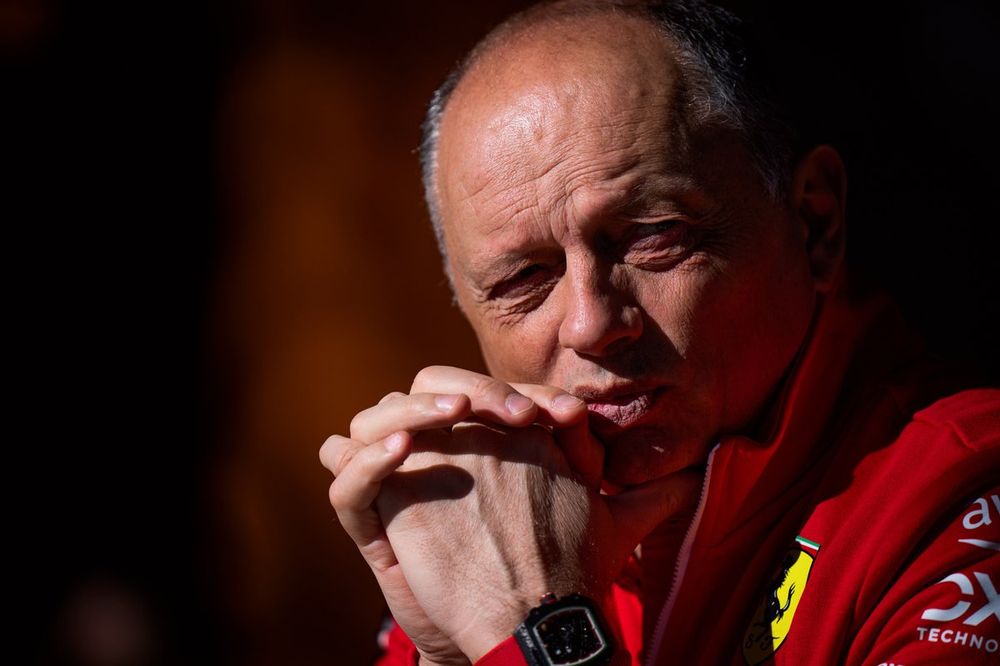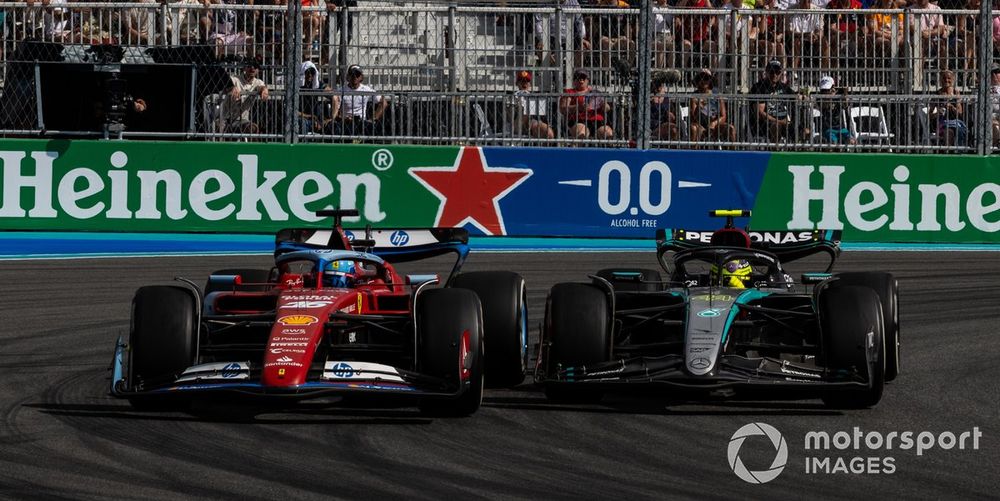The two-day test will consist of a day of dry running with 2025 prototype slick compounds, before the track is made wet for day two when the Italian tyre manufacturer tries out a new extreme wet compound.
The wet track running is key because wet tyre tests are harder to organise, with Pirelli having to book in days at Paul Ricard or Fiorano where the track can be made wet artificially using sprinkler systems.
Pirelli has gone blanket-less during the 2023 season with its blue-rimmed rain tyres, which have been unpopular because of their huge performance drop compared to intermediates. Furthermore, the lack of visibility in conditions that benefit from those full wet tyres is already on the edge of what is deemed safe.
«We have two test days; the first one is a dry session, the second one we wet the track,» Pirelli chief engineer Simone Berra explained when asked by Autosport about the objectives of the test.
«We are testing both wet and intermediates, but the priority one is the wet. We would like to improve its performance.
«We know that at the moment the wet is suffering a little bit too much from overheating and in terms of performance it degrades quite quickly due to the blanket removal we did last year.
«So, we are working to decrease the movement of the tread pattern and improve the overheating.
«We have a plan for the intermediates as well, basically using new compounds. Our target is to remove the blankets as well for the intermediates like we have done with the wet tyres.»

Pirelli wet tyres
Photo by: Jake Grant / Motorsport Images
The target is to have more robust compounds ready for the start of the 2025 season, although Pirelli didn’t completely rule out introducing something sooner if the test at Le Castellet is a success.
On the first day with Ferrari, Pirelli will try and nail down its tyre structure for 2025 and evaluate prototypes of its softer range of compounds for next year.
«For the slick test on day one we are mainly focused on freezing the structure for next season,» Berra added.
«But more importantly, we will try to test C3, C4 and C5 as well at compound level.
«For the C5 I think it’s the first time this season we are testing it. So, it will be interesting to see some results for the next-generation compound.»
Before Imola, Ferrari already conducted a wet-weather test at Fiorano at the behest of the FIA to trial the latest spray guards solution, which was not a success.






















